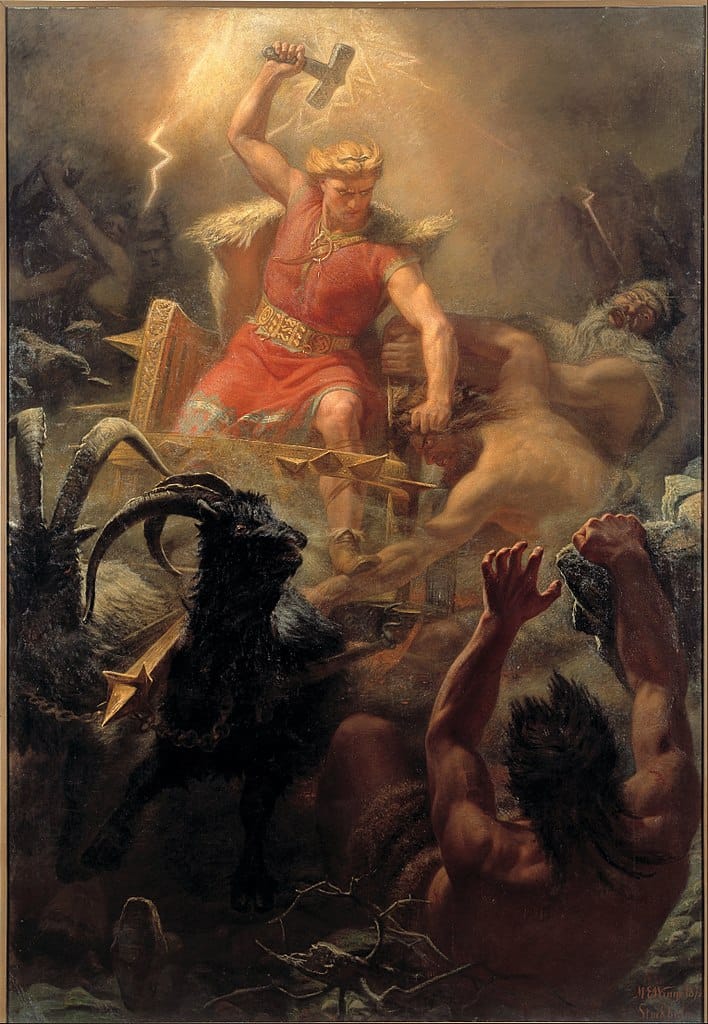thorium (paid)

Thorium is a chemical element with atomic number 90 and the symbol Th. It is named after the Norse god Thor + -ium. It is a soft, malleable, silver-colored metal. All the isotopes of thorium are radioactive, but the most stable one, 232Th, has a half-life of over 14 billion years, or equal to the age of the universe. Thorium has some uses in scientific instruments, high-end optics, gas mantles, and vacuum tubes, but these uses are dwindling. It has been suggested as a possible fuel for nuclear reactors, and a few experimental reactors using the element as fuel have been constructed.
In 1815 chemist Jöns Jacob Berzelius announced what he thought to be a new element, and three years later he dubbed it thorjord (thor’s earth; thorina in French), after the ancient Norse god Thor. But Berzelius was mistaken, and the mineral was actually a compound of yttrium. The chemist retracted his discovery in 1824. But in 1829, Berzelius identified the element in a different ore, which had been found and given to him by amateur minerologist Morten Thrane Esmark, and he recycled the earlier name:
Detta mineral innehåller en förut obekant metallisk kropp, hvilken, i afseende till sina egenskaper hörer till dem, som bilda de så kallade egentliga jordarterna, och dess oxid är en jord, som närmast liknar zirkonjorden och som, bysynnerligt nog, har största delen af de egenskarper och kännetecken, dem jag i min äldre beskrifning af thorjorden has denna funnit. Denna omständighet föranledde mig att, i början af denna undersökning, fästa namnet thorjord vid den nya jorden; och ehuru jag, vid en förnyad undersökning af hvad some ännu âterstod af det mineral, i hvilket jag trott mig finna den äldre thorjorden, icke kunde upptäcka det minsta spår af den nya sâ har jag dock trott mig med så mycket större skäl kunna för den sistnämda behålla samma namn, som den äldre beskrifningen till det mesta passar derpå, och detta namn en gång är i vetenskapen infödt. Detta medförer en gifven grund för det nya mineral, som jag kallar Thorit.
(This mineral contains a previously unknown metallic body, which, in regard to its properties, belongs to those which form the so-called proper earths, and its oxide is an earth which most closely resembles zircon ore, and which, curiously enough, has the greater part of the characteristic features and characteristics, those I have found in my older description of thorjorden. This circumstance induced me, at the beginning of this investigation, to attach the name thorjord to the new earth; and although, on a renewed examination of what still remained of the mineral in which I thought I found the older thor soil, I could not discover the smallest trace of the new one, yet I have believed myself with much greater reason to be able for the latter retain the same name, as the older description mostly fits it, and this name is once native to science. This provides a given basis for the new mineral, which I call Thorite.)
In early English use, the element was called the element thorina or thorinum, after the French name thorina, but these names had gone out of use by the late nineteenth century, and the form thorium was universally adopted.
Sources:
Berzelius, Jöns Jacob. “Undersökning af ett nytt mineral, som innehåller en förut obekant jord” (1829). Kungl. Svenska vetenskapsakademiens handlingar. Stockholm: P. A. Norstedt & Söner, 1830,1–30 at 2–3. Biodiversity Heritage Library.
Miśkowiec, Pawel. “Name Game: The Naming History of the Chemical Elements: Part 2—Turbulent Nineteenth Century.” Foundations of Chemistry, 8 December 2022. DOI: 10.1007/s10698-022-09451-w.
Oxford English Dictionary, second edition, 1989, s.v. thorium, n., thorina, n., thorinum, n.
Image credit: Mårten Eskil Winge, 1872. Nationalmuseum Sweden. Wikimedia Commons. Public domain image.